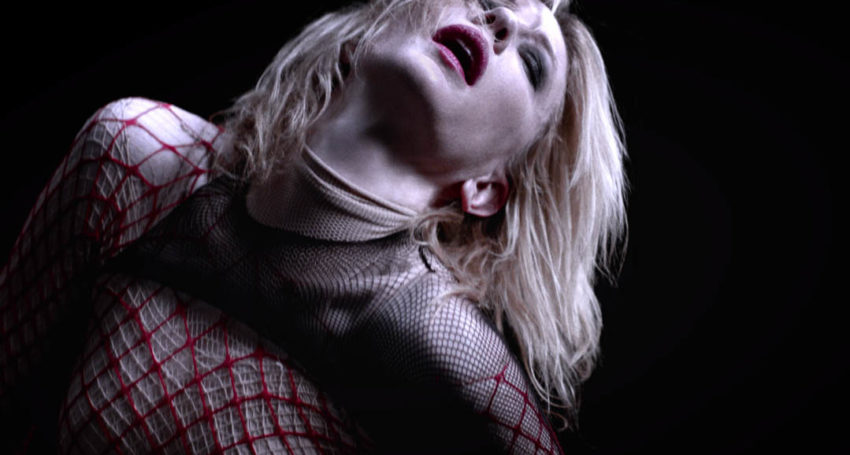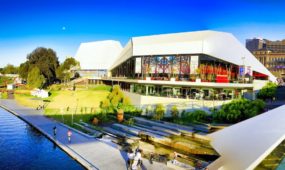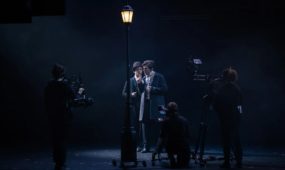Sex, death and Del Kathryn Barton
Arts
A TWO-TIME Archibald prizewinner, del kathryn barton continues her fascination with the complex psychology of relationships, sex and fertility in her work RED (now at the Art Gallery of South Australia). This transition into film is as energetic, tumultuous, detailed and beautifully unsettling as her figurative paintings. Perhaps more so.

Sign up to receive notifications about new stories in this category.
Thank you for subscribing to story notifications.

RED was three years in the making and it’s hard not to marvel at the coincidence of its premiere this week, when female power and outrage has reverberated across the world. RED is a slick and strident feminist work. Although it was not made with deliberate political intent, it has the potential to resonate loud and unapologetic, like a lightening rod for our times.
RED has evolved into what I now consider to be an uncompromising celebration of female power.
Barton draws on the natural sciences to advance her exploration of the complex psychology of relationships. With RED, she examines mating rituals and the imperative to reproduce as evidenced in redback spiders (Latrodectus hasselti).
Shiver-inducing close ups of this common and poisonous Australian creature are interspersed with human characterisations that produce shudders of a deeper variety.
RED is produced and crewed by some of the leaders in Australian film and theatre. Cate Blanchett stars as the protagonist, The Mother.
Choosing to structure the sequence as a set of narrative beats, rather than a traditional script, barton overlays the visuals with a tense and thumping soundtrack. These deep beats pulse through the sequence of jump cuts from intensive macro shots of spiders to the Mother and other human characterisations.
The Mother is at first still and brooding, crouched on a board table floating in a heaving sea, her features stark but for a totemic gash of red lipstick. She wears a classic tuxedo suit, contained and androgynous. And that’s when you notice the scissors.
Those bass beats drum out her fever as she slashes, stabs and sheers through the suit, tearing the fabric from her legs, crotch and torso to reveal a very taut female form beneath, encased in nets. She keeps her patent red shoes on.
Interspersed between shots of the actors are close ups of redback spiders in the act. The species is known for sexual cannibalism. In most cases, the female begins to eat her mate during or just after copulation. At some point in their evolution, this strategy was found to improve the chances of fertilisation and ensure the survival of the mother and offspring.
The climax is the pinnacle of the male’s existence. If he is selected by the female, he has one shot and that’s it. He has fulfilled his end of the deal and has no future role in parenting. Instead, he volunteers himself as a resource to be consumed by the female for the benefit of the next generation.
Barton characterises the behaviour and physical interactions of the Mother and Father with brutal force. However, the liaison is not totally devoid of tenderness. There is a sense of recognition for the Father’s willing sacrifice, for the brutality of the deal he’s consummated, in the Mother’s longing to prolong not just the act itself but their physical intimacy. She drinks him in.
It may be some time before she requires another mate: the female redback can store sperm for up to two years, enabling her dead partner to sire more than one litter of spiderlings to the exclusion of other males.
Following the violence of intercourse, barton leads us through the conception and birth of the next generation. The sequence of fertilisation, gestation and awareness is comprised of animated and live shots and presents life as a journey, a road trip to the foot of the Mother.
The Mother guides her Daughter (Arella Plater) through the growing awareness of her power, the danger and beauty of her existence, to a point of self-actualisation. She grapples with the conflict between the longing for her father and her own growing hunger. Her innocent cry for “Daddy?” is laden with both sadness and fear – he is a part of her yet she would not exist without his destruction. So the cycle continues.
We can read this work from a number of viewpoints; both Freudian and feminist scholars will have a field day. To discuss the intensity of such a chaotic and powerful work, born from a strong feminine sensibility, is a challenge.
Blanchett’s recent work Manifesto (2015-2015) is an interesting contrast to RED: one intellectual and scholarly in its content, the other wild, unscripted and unbound.
Female creative power is an undeniable and vital force of nature. As such it is usually misunderstood, traditionally feared and difficult to restrain. Like barton’s RED, however, it demands respect and deserves to be celebrated.
RED runs from Thursday 26 January to Sunday 30 April at the Art Gallery of South Australia. Admission is free. del kathryn barton will be in conversation with Art Gallery Director, Nick Mitzevich on Friday 3 March at 6pm.
Presented by the Art Gallery of South Australia Contemporary Collectors and supported by Adelaide Festival.
Heather L. Robinson, Research Associate & PhD Candidate, School of Humanities and Creative Arts, Flinders University
This article was originally published on The Conversation. Read the original article.
Jump to next article







